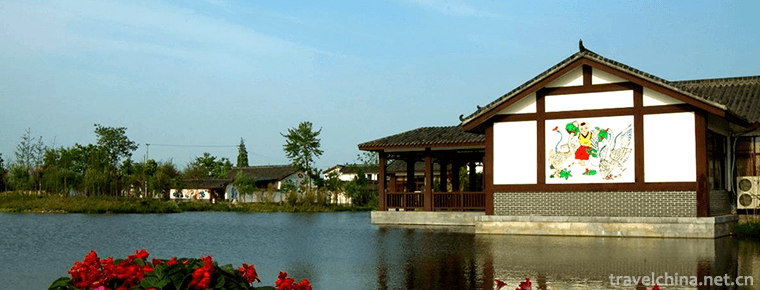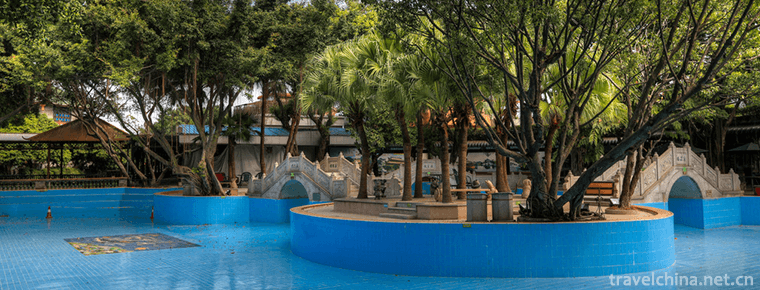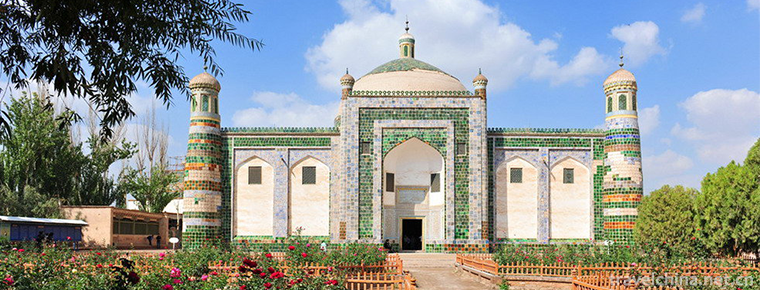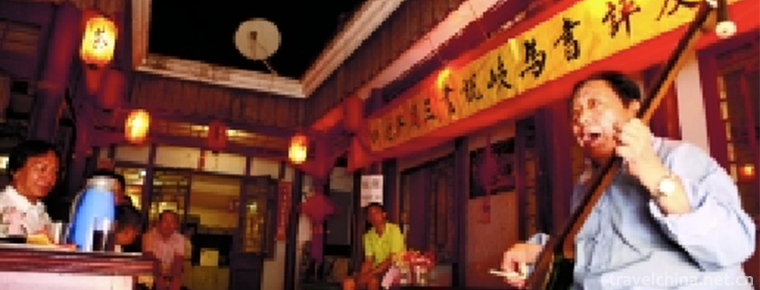Overview of Guangyuan
Overview of Guangyuan
In 2019, the GDP of Guangyuan will reach 94.185 billion yuan, an increase of 7.5% over the previous year, which is the same as that of the whole province. Among them, the added value of the primary industry was 15.301 billion yuan, an increase of 3.1% over the previous year; the added value of the secondary industry was 38.968 billion yuan, an increase of 8.2%; the added value of the tertiary industry was 39.916 billion yuan, an increase of 8.4%.
In 2018, the gross domestic product (GDP) of Guangyuan was 80.185 billion yuan, an increase of 8.4% over the previous year in terms of comparable prices. Among them, the added value of the primary industry was 11.810 billion yuan, an increase of 3.8%; the added value of the secondary industry was 35.856 billion yuan, an increase of 9.0%; the added value of the tertiary industry was 32.519 billion yuan, an increase of 9.3%. 1、 The contribution rates of the secondary and tertiary industries to economic growth were 6.9%, 49.9% and 43.2%, respectively, which promoted economic growth by 0.6%, 4.2% and 3.6%. The annual per capita GDP was 30105 yuan, an increase of 7.7% over the previous year.
The structure of the three industries was adjusted from 15.4:44.7:39.9 to 14.7:44.7:40.6 from 15.4:44.7:39.9 of the previous year, and the proportion of the added value of service industry in GDP increased by 0.7 percentage points over the previous year. There were 23098 new registered market entities, including 3566 enterprises. The output value of strategic emerging industries increased by 21.5%, accounting for 0.5% higher than that of the previous year, and accounted for 21.4% of the growth of industrial output value above designated size. Investment growth momentum conversion. The investment in manufacturing industry was 14.065 billion yuan, up 49.7%, accounting for 20.9% of the total investment, an increase of 5 percentage points over the previous year; the investment in cultural industry and health service industry increased by 50.9% and 24.9% respectively; the investment in high energy consumption industry decreased by 26.2%, accounting for 7.2% of the total social investment from 11.2% of the previous year. The sales of consumer upgrading goods increased rapidly. The retail sales of automobiles, sports and entertainment products, household appliances and audio-visual equipment of units above the quota increased by 15.7%, 14.6% and 13.9% respectively, which was higher than that of above quota units. The income gap between urban and rural residents has narrowed from 2.60 in the previous year to 2.58.
In 2018, the added value of the non-public economy of the whole city was 46.507 billion yuan, an increase of 8.5% over the previous year, accounting for 58.0% of GDP and 0.1 percentage point higher than that of the previous year. The added value of private economy (individual and private economy) was 44.926 billion yuan, an increase of 8.6%, accounting for 56.0% of GDP, an increase of 0.1 percentage point over the previous year. Among them, the added value of the primary industry was 4.045 billion yuan, an increase of 3.9%; the added value of the secondary industry was 25.575 billion yuan, an increase of 9.4%; the added value of the tertiary industry was 15.306 billion yuan, an increase of 8.4%.
The consumer price of the whole year was 1.6% higher than that of the previous year, and the prices of eight categories of commodities showed an upward trend. Among them, food, tobacco and alcohol rose by 1.8%, clothing by 2.1%, residence by 0.1%, daily necessities and services by 0.9%, transportation and communication by 1.1%, education, culture and entertainment by 3.1%, health care by 4.6% and other supplies and services by 1.3%.
In the whole year, 41000 new urban jobs were created, an increase of 12000 over the previous year; 13300 unemployed people were re employed, an increase of 0600 over the previous year; and 3300 people with employment difficulties were employed, a decrease of 0200 compared with the previous year. The registered urban unemployment rate was 3.7%, 0.2 percentage points lower than that of the previous year.
At the end of the year, there were 1179 "four top" enterprises in the city, 88 more than the previous year. Among them, there were 486 Industrial Enterprises above Designated Size, an increase of 21; 361 qualified construction enterprises and real estate development enterprises, an increase of 34; 224 wholesale and retail accommodation and catering enterprises above the quota, an increase of 2; and 108 service enterprises above the designated scale, an increase of 31.

Overview of Guangyuan
-
Ailao Mountain
Ailao Mountain, located in the middle of Yunnan Province, China, extends south of Yunling Mountains. It is the boundary between Yunnan-Guizhou Plateau and Hengduan Mountains. It is also the watershed
Views: 482 Time 2018-11-01 -
Black Valley Scenic Area
Black Valley, National AAAAA Tourist Scenic Spot, National Forest Park, National Geopark, China's Best Leisure Mountain, China's Best Green Low Carbon Tourist Leisure Spot
Views: 181 Time 2018-12-12 -
Mianzhu New Year Picture Village Scenic Area in China
New Year Picture Village is located in Xiaode Town, South Gate of Mianzhu City, Sichuan Province. It is located between De'a Highway and Chengqing Highway, 73 kilometers away from Chengdu and within o
Views: 211 Time 2018-12-22 -
Bao Mo yuan
Baomo Garden is located in Zini Village, Shawan Town, Panyu District, Guangzhou City, Guangdong Province. It was built in the late Qing Dynasty and covers an area of five mu
Views: 191 Time 2019-01-02 -
Lianhuashan Ski Resort
Located in Zhangzhen, Shunyi District, Beijing, Lianhuashan Skiing Ground covers an area of more than 1 million square meters and was opened on December 19, 2003.
Views: 226 Time 2019-01-29 -
Abakh Hoja Tomb
Xiangfei Tomb is located in Haohan Village, 5 km east suburb of Kashgar City. It is a key cultural relic protection unit in the autonomous region. This is a typical Islamic complex of ancient building
Views: 171 Time 2019-02-25 -
Beijing storytelling
Beijing Book Review is a traditional art of rap and singing. Legend has it that Liu Jingting (1587-1668), a Southern Jiangnan storyteller, came to Beijing in the late Ming and early Qing Dynasties
Views: 470 Time 2019-04-04 -
Linear cavity
Line-tune opera, also known as Line-score opera, is an ancient traditional opera in Shanxi Province. It first appeared in the Han and Tang Dynasties, and developed greatly. It flourished in the Song D
Views: 169 Time 2019-07-03 -
Yuejiaquan
Yuejiaquan is one of the traditional Chinese boxing which has been handed down completely in China. It was founded by Yue Fei, a national hero, according to his own learning and combating with the ene
Views: 184 Time 2019-07-16 -
Chengdu Metro Line 1
Chengdu Metro Line 1 is the first metro line to be completed and put into operation in Chengdu, Sichuan Province, China. It is the first metro line opened in Western China. The first phase of the project was opened on September 27, 2010, The phase II project (Century City station to Guangdu station)
Views: 137 Time 2020-11-28 -
Nanchong economy
In 2019, Nanchong's GDP will reach 232.222 billion yuan, an increase of 8.0% over that of 2018. Among them, the added value of the primary industry was 40.425 billion yuan, an increase of 2.9% over 2018; the added value of the secondary industry was
Views: 357 Time 2020-12-17 -
Dazhous location
Dazhou is located in the junction of Sichuan, Chongqing, Hubei and Shaanxi provinces and the Chengdu Chongqing Economic Belt in the upper reaches of the Yangtze River. It is the "East Gate" of Sichuan opening to the outside world and a key regi
Views: 279 Time 2020-12-20








